Deaf Education in the 21st Century: Topics and Trends by Nanci Scheetz, ISBN-13: 978-0138154448
[PDF eBook eTextbook]
- Publisher: Pearson; 1st edition (May 23, 2011)
- Language: English
- 336 pages
- ISBN-10: 0138154449
- ISBN-13: 978-0138154448
A contemporary text designed to prepare future professionals to successfully work with deaf and hard of hearing students.
With the advent of new medical advances, new technologies, and new educational opportunities, the field of deaf education is rapidly changing and evolving. Deaf Education in the 21st Century provides readers with an up-to-date look at research, the changing population of deaf and hard-of-hearing students, and what implications these discoveries and changes mean for educators, interpreters, service providers, and parents.
Features covered in Deaf Education in the 21st Century:
· Information on myths and misconceptions about people who are deaf help students understand the issues and challenges that the deaf and hard of hearing population face each day
· Multiple chapters focus on cognition and personal and social development and additionally offer students important information about deaf education that is not always included in introductory material.
· A chapter that examines postsecondary opportunities and employment trends for the deaf and hard-of-hearing
· Several chapters discussing the impact of cochlear implants on language and literacy help students understand this new and complex development in deaf education.
· Extensive coverage on preparing personnel to serve individuals who are deaf or hard-of-hearing offers unique information, not often found in other texts, about what educators, interpreters and social service providers need to know and do to successfully work with the deaf population.
Table of Contents:
Chapter One: Deaf Education in the 21st Century: Trends, Topics, and
Technology: A Brief Overview
Overview of the Text
What we know about the field today
Chapter Two: Myths and Misconceptions about People Who Are Deaf
People Who Are Deaf Can’t Hear Anything
Myths Surrounding the Causes of Hearing Loss
All Children Who Are Deaf Have Parents Who Are Deaf
All People Who Are Deaf Can Read Lips
People Who Are Deaf Can’t Read
People Who Are Deaf Can’t Talk
American Sign Language (ASL) is Just English on the Hands
American Sign Language is Consistent Throughout the United States
American Sign Language is International
Hearing Aids Enable Deaf People to Hear Speech
All People Who Are Deaf Wish They Could Hear
People Who Are Deaf Are Not as Intelligent as People Who Can Hear
People Who Are Deaf Can’t Drive, Fly Planes, or Operate Motor Boats
Individuals Who Are Deaf Have More Serious Emotional Problems than Hearing People
People Who Are Deaf Can’t Work
People Who Are Deaf Are Very Quiet
All People Who Are Deaf Know Sign Language
Summary
Chapter Three: A Look at the Field of Deaf Education: Where We’ve Been — Where We Are Today
Prevalence, Etiology and Identification
Deaf/deaf
Hard of Hearing
Deafened
Prevalence of Hearing
Diversity in the United States
Diversity within the Deaf Community
Educational Settings
Modes of Communication
Hearing Aids and Cochlear Implants
Closed Captioning Technology
Use of Computer Technology
Video Relay Services (VRS) and Video Relay Interpreters (VRI)
Speech- to-Text Technology
Legislation
Organizations, Clubs, and Cultural Events
Dimensions of Deafness: Identity, Ethnicity, and Social Development
Summary
Chapter Four: The Art of Hearing and Hearing Loss
The Nature of Sound
Acoustics of Speech
The Hearing Mechanism
Structure and Function of the Ear
The Outer Ear
The Middle Ear
The Inner Ear
Auditory Connections in the Brain
The Physiology of Hearing
Prevalence and Etiology of Auditory Dysfunction
Terminology
Hearing Loss
Degrees of Hearing Loss
Hard of Hearing
Deaf
Etiology of Auditory Dysfunction
Conductive Hearing Loss
Sensorineural Hearing Loss
Congenital Losses
Genetically Inherited Hearing Loss
Autosomal Dominant Disorders
Autosomal Recessive Disorders
X-Linked Disorders
Acquired Losses
Maternal Rubella
Cytomegalovirus (CMV)
Meningitis
Prematurity or Birth Complications
Other High Risk Factors for Hearing Loss
Persistent Pulmonary Hypertension of the Newborn (PPHN)
Fetal Alcohol Syndrome (FAS)
Causes of Hearing Loss in Adults
Noise Exposure
Ototoxic Drugs
The Aging Process
Meniere’s Disease
Diseases of the Central Auditory System
Summary
Chapter Five: Family Dynamics: Response to Diagnosis, Interpersonal Relationships, Impact on the Family Unit
Anticipation, Expectations, and Responses to the Birth of a Baby
Hearing Parents Response to the Diagnosis
Deaf Parents Response to the Diagnosis
Characteristics of Healthy Families
Factors that Contribute to Healthy Families with Deaf Children
Communication: Connecting and Interacting with Others and Society
The Building Blocks for Communication
Selecting a Mode of Communication: Factors Families Consider
Sibling Relationships
Sibling Relationships: Interactions between Deaf and Hearing Children
Self-Esteem: A Reflection of One’s Self-Image
Summary
Chapter Six: Language Acquisition: Acquiring the Building Blocks for Communication
Communication
The Components of Language
Form
Phonology
Morphology
Syntax
Content
Semantics
Use
Pragmatics
Stages of Language Development
Modes of Communication
Oral Methods: Acquiring Spoken Language
Auditory Verbal
Auditory Oral
Natural Oralism/Natural Auralism
Maternal Reflective Method
Visual Modes of Communication
American Sign Language
Manually Coded English Sign Systems
Rochester Method
Signed English
Seeing Essential English (SEE I)
Signing Exact English (SEE II)
Conceptually Accurate Signed English (CASE)
Contact Signing or Pidgin Signed English
Multimodal Communication Approaches
Cued Speech
Sign Supported Speech
Simultaneous Communication
Total Communication
Bilingual Communication: ASL and English
Impact of Prelingual Hearing Loss on Language Development
Enhancing Language Development Through the Use of American Sign Language
Enhancing Language Development Through an Auditory Verbal Approach
Summary
Chapter Seven: Hearing Assessment, Hearing Aids, Cochlear Implants, and
Modern Technology
Identifying Hearing Loss: The Hearing Evaluation
Pure-Tone Testing
Bone-Conduction Testing
Classification of Hearing Loss
Speech Reception Threshold Tests
Social Adequacy Index
Neonatal Screening
Otoacoustic Emission (OAEs)
Auditory Brainstem Response (ABR)
Infants and Toddlers
School Age Children
The Function and Components of Hearing Aids
Microphones
Amplifier
Receiver
Earmolds
Additional Components
Pitch or Tone Control
Telecoil Circuitry
Batteries
Types of Hearing Aids
Over the Ear (OTE) or Behind the Ear (BTE)
All In the Ear (AIE) or In the Ear (ITE)
In the Ear (ITE)
In the Canal (ITC)
Completely in the Canal (CIC)
Low Profile Aids
CROS Hearing Aids
BiCROS Hearing Aids
IROS Hearing Aids
Bone Conduction Hearing Aids
Implantable Bone Conduction Hearing Aid Device
Implantable Middle Ear Hearing Aids
Digital Technology
Cochlear Implants
Binaural and Monaural Hearing Aid Fittings
Hearing Aid Orientation
Psychological and Emotional Ramifications of Hearing Loss
Group Listening Systems
Audio Loops
FM (Frequency Modulation) Systems
AM Systems
Infared Systems
Individual Amplification Systems
Assistive Listening Devices
Telephone Amplifiers
Additional Devices for Individuals who Experience Difficulty Hearing
Summary
Chapter Eight: Educational Settings: From Tradition to Current Practice
A Brief Historical Overview: School Reform since the 1960s
Elementary and Secondary Education Act (ESEA) (1965)
Vocational Rehabilitation Act (VRA) (Public Law 93-112, Section 504)
Educational Amendments Act (Public Law 93-380) (1974)
Education for All Handicapped Children Act (EACHCA) Public Law 94-
142, Part B (1975)
Education of the Handicapped Act Amendments (Public Law 99-457)
First Wave of Educational Reform
Second Wave of Educational Reform
Third Wave of Educational Reform
Americans with Disabilities Act (ADA) (Public Law 101-336)
Individuals with Disabilities Education Act (IDEA) (PL 101-476)
Individuals with Disabilities Education Act (IDEA) (PL 105-17)
Reauthorization of IDEA (Public Law 108-446)
Educating Deaf Students: The Oral/Manual Controversy
Educational Environments
Residential School Programs
Day Schools
Regular Education Classes
Early Intervention Programs
Mainstreamed Programs
Inclusion Programs
Resource Rooms and Separate Classes
Co-teaching/Co-enrollment for Students who are Deaf and Hard of
Hearing
The Role of the Itinerant Teacher
The Role of the Interpreters in Inclusive Classrooms
Achievement: A Look at Deaf Students in the K-12 Setting
Summary
Chapter Nine: Literacy: Unlocking the Curriculum through Reading and Writing
Reading: A Process Involving Language and Cognition
Bottom-Up Theories
Top-Down Theories
Interactive Theories
Report: National Reading Panel
Additional Factors Contributing to Literacy
Barriers to Reading Comprehension: Factors that Impact Students
who are Deaf and Hard of Hearing
Phonemic Awareness in deaf and Hard of Hearing Children
Use of Phonics by Deaf and Hard of Hearing Readers
Fluency within Readers who are Deaf and Hard of Hearing
Comprehension of Text
Vocabulary Development
Bilingual Programs: Teaching Deaf Children to Read
Shared Reading Program
Reading Milestones/Reading Bridge
Reading Strategies: Literacy Practices Used with Deaf and Hard of Hearing
Students
Writing, Spelling, and Deaf Students
Process Approach to Writing
Writing Strategies
Summary
Chapter Ten: Cognition: Thought Processes and Intellectual Development
A Brief Historical Overview
A Brief History
Related Research
Development of Visual Attention by Hearing and Deaf Children
Theory of Mind
Memory Systems: Storing Visual and Spatial Information
The Articulatory Loop
Research: Short-Term Memory Encoding by Students who Are Deaf or Hard of Hearing
The Visuo-Spatial Sketchpad
Research: Use of Visuo-Spatial Memory Between Deaf Signers and Non-
Signers
Why Implement Cognitive Intervention
A Method
Barriers
Selecting a Cognitive Intervention Program
Professional Actions
Intellectual Functioning: Cognition as it Relates to Intelligence Tests
What Intelligence Tests Measure
Additional Views
Limitations
Description
Intellectual Testing and Deafness
Developing Metacognitive Skills
Feuerstein’s View of Cognitive Growth
Incorporating Thinking Skills across the Curriculum
Summary
Chapter Eleven: Personal, Social, and Cultural Development
Sharing Cultural Values and Beliefs: Impact on Self Concept and Identity
Culturally Deaf Identity: Mark
Culturally Hearing Identity: Oliver
Bicultural Identity: Amanda
School settings: influence on cultural perceptions
Socialization Experiences in Mainstream/Included Educational
Settings
Developing a Self-Concept and Feelings of Self Esteem
Research with Students who are Deaf or Hard of Hearing: A Glimpse into Self-Concept and Self-Esteem
Summary
Chapter Twelve: Economics, Postsecondary Opportunities and Employment Trends
Labor Force Projections: A Look at Where We Are and Where We Are
Expected to be in 2018
Supporting Individuals who are Deaf and Hard of Hearing so They Can Become
Gainfully Employed
Providing Support Services: The Role of Vocational Rehabilitation
Support Services for People who are Deaf and Low Functioning
Professionals who are Deaf or Hard of Hearing in the Workforce
Support Services: Making Post-Secondary Institutions Accessible for Students
Who are Deaf and Hard of Hearing
Career Experiences of College Educated Deaf and Hard of Hearing Individuals
A Look at Underemployment Found with respect to Individuals who are Deaf
Or Hard of Hearing
Employment Trends and Employer Expectations
Chapter Thirteen: Individuals who are Deaf with Additional Disabilities
Children who are Deaf or Hard of Hearing Children with Additional Disabilities:
Cognitive/Intellectual Conditions
Individuals who are Deaf or Hard of Hearing who also have a Learning
Disability
Individuals who are Deaf or Hard of Hearing with Emotional Behavioral
Problems
Individuals who are Deaf or Hard of Hearing with an Intellectual
Disability
Individuals who are deaf with Autistic Spectrum Disorders
Individuals who are deaf or hard of hearing with Attention-Deficit/
Hyperactivity Disorder
Legal Blindness and Uncorrected Visual Problems
Individuals who are Deaf-Blind
Individuals who are deaf who have Cerebral Palsy
Other Disabling Conditions
Summary
Chapter Fourteen: Preparing Personnel to Serve Individuals who are Deaf or Hard of Hearing
Characteristics of Master Teachers
Relationships
Assessments
Master Teachers in Deaf Education
Classroom Discourse
Use of Teaching Strategies
Teacher Attitudes
Teacher Behaviors and Competencies
Schools for the Deaf or Separate Schools
Teachers in Resource Rooms and Separate Classes
The Co-teacher or Collaborative Teacher
The Itinerant Teacher
Educational Interpreters: Characteristics of Effective Communication
Facilitators
The Role of the Educational Interpreter
Best Practices When Interpreting in the Primary Grades
Best Practices When Interpreting in the Elementary and Middle School Setting
Best Practices When Interpreting in High School Settings
Best Practices When Interpreting in Post-Secondary Settings
Summary
Chapter Fifteen: Epilogue
Summary of Current Relevant Research in the Field
Future Projections and Trends
Dr. Nanci Scheetz is a professor and program coordinator for the ASL/Interpreting and Deaf Education programs at Valdosta State University. She is a nationally certified interpreter and teaches courses in both the interpreter training program as well as the deaf education program. She has authored several texts including: Orientation to Deafness, Psychosocial Aspects of Deafness (Allyn & Bacon, 2003), Sign Communication for Everyday Use (Aspen Publishers, 1998), and Building ASL Interpreting and Translation Skills: Narratives for Practice (Allyn & Bacon, 2008).
What makes us different?
• Instant Download
• Always Competitive Pricing
• 100% Privacy
• FREE Sample Available
• 24-7 LIVE Customer Support

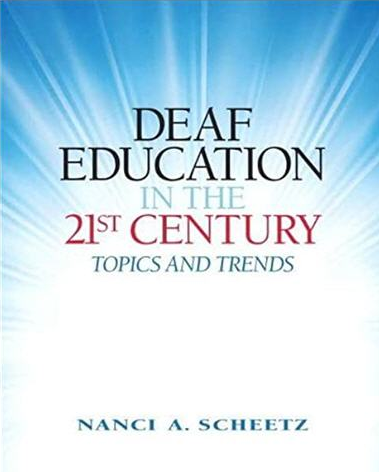

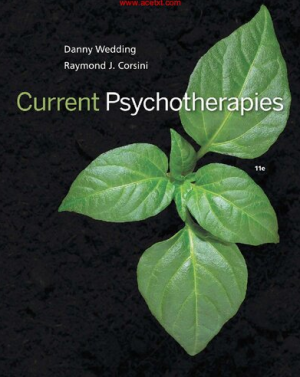
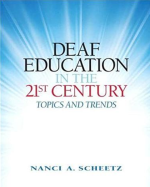

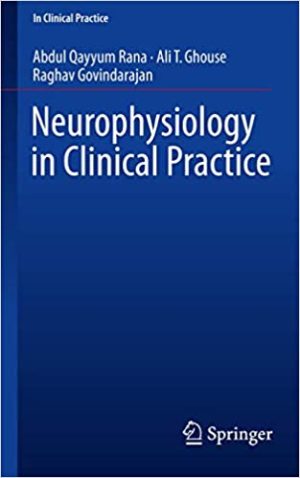
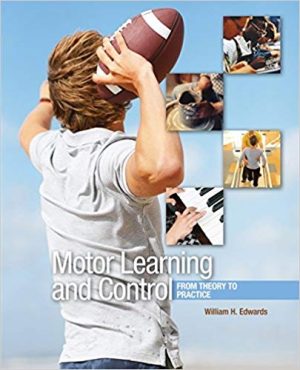
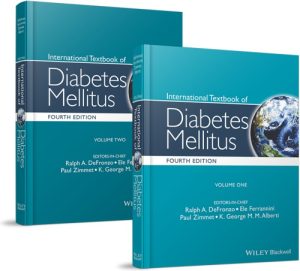
Reviews
There are no reviews yet.